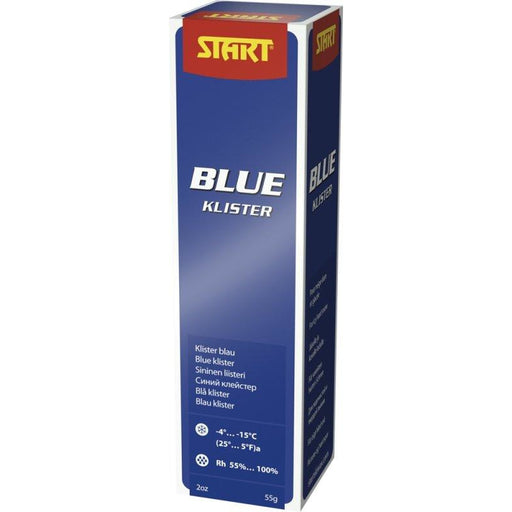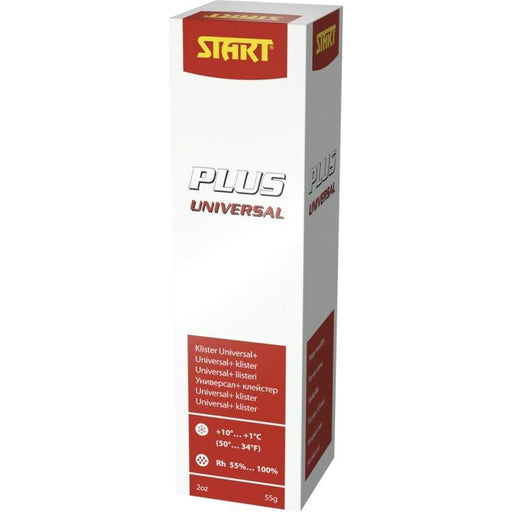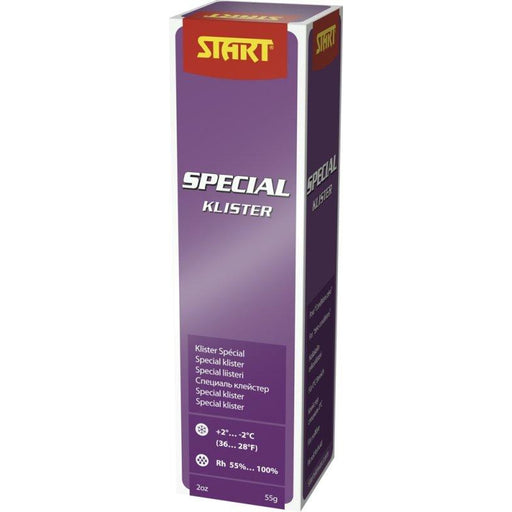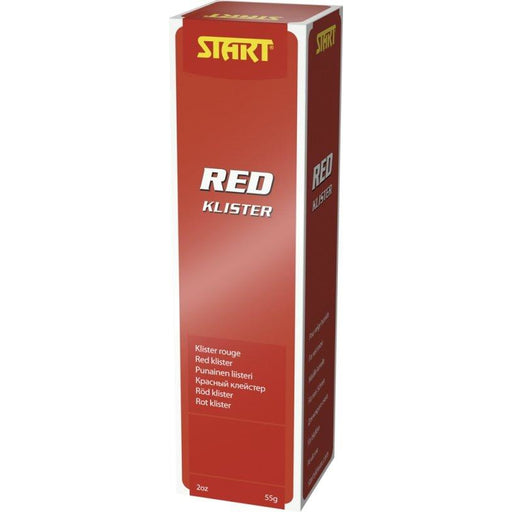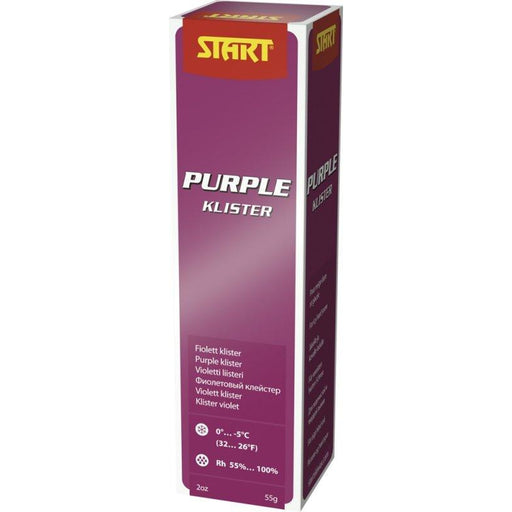Klister
Many people are afraid of klister, don't be! Klister can give very good skis and is not that difficult.
Klister is laid in a shorter zone than kick wax, this is because klister builds more under the skis. The klister is applied thinly in short lines diagonally backwards from the center edge of the ski. Spread the klister with a cork, or even better with your thumb.
The easiest thing is to put klister indoors, the klister is easier to work with when it's warm.
The biggest problem with the klister is that it can ice/freeze if you ride in fresh snow. This is often remedied by covering the klister thinly with a kick wax.
START BLUE GLUE -4 / -15
Start Blue Klister – Icy tracks -4 …-15°C. Can be used on its own or as a mix-in adhesive Start Wide adhesive . START'S DIFFERENT STICKERS: • Start...
View full detailsSTART UNIVERSAL PLUS ADHESIVE +10 / +1
Start universal Plus Klister – for wet snow and also works well to mix with other embankments +10°…+1°C. When herding with glue, you always start ...
View full detailsSTART SPECIAL GLUE +2 / -2
Start Special Klister – for below zero +2...-2°C. When herding with adhesive, you always start with a base adhesive at the bottom. Then add another...
View full detailsSTART RED STICKER +2 / -2
Start Red Klister – for wet snow Used as mixing adhesive in Start Wide adhesive . START'S DIFFERENT STICKERS: • Start Red Glue – for wet snow. +2°…...
View full detailsSTART PURPLE GLUE 0 / -5
Start Violett Klister – for damp, coarse grain and icy tracks Used as mixing adhesive in Start Wide adhesive . START'S DIFFERENT STICKERS: • Start...
View full details
